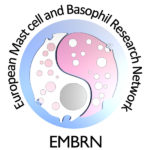Basophil activation tests
Basophils and mast cells belong to distinct myeloid lineages, but they share a number of morphological and functional features (Stone 2010). Most notably, they are the only cell types which respond to immunoglobulin E (IgE)-induced activation via the high affinity receptor for the constant fragment
